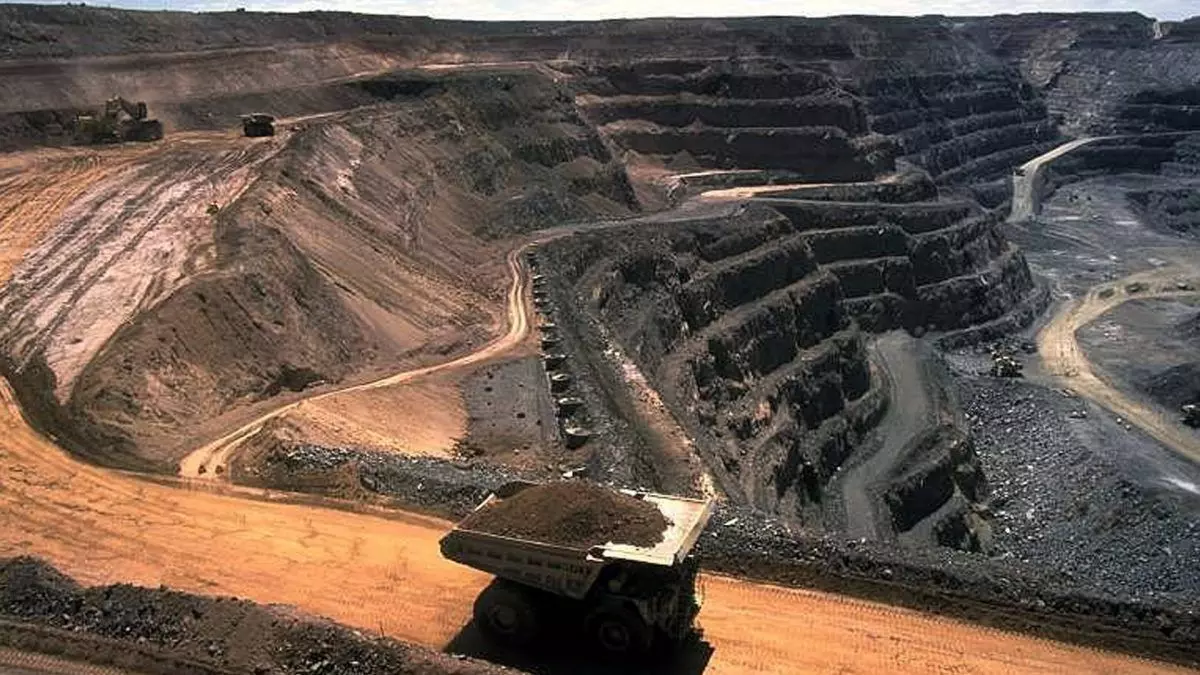Govt to auction 26 coal mines on Wednesday while IEA predicts a decline in coal demand globally by 2.6%
China, India and Indonesia, the three largest coal producers globally are expected to break output records in 2023, pushing global production to a new high in 2023
image for illustrative purpose

Hyderabad: The Centre will launch the ninth round of commercial coal mines auction on Wednesday, offering as many as 26 blocks to bidders.
In pursuit of ensuring energy security and driving economic development, the Ministry of Coal is set to embark on another significant stride with the launch of the 9th round of Commercial Coal Mine Auctions here on 20th December 2023, the Coal Ministry said in a statement.
"Of the 26 coal mines to be auctioned, seven are fully explored, while 19 are partially explored blocks," the ministry said. These mines are in the states of Chhattisgarh, Jharkhand, Madhya Pradesh and Telangana.
Coal and Mines Minister Prahlad Joshi will be the chief guest and Minister of State for Railways, Coal and Mines Raosaheb Patil Danve will be the guest of honour on the occasion.
Unlike previous commercial coal mine auctions, there are no restrictions on the sale or utilisation of coal. "Notably, eligibility criteria have been eliminated, removing any technical or financial barriers for participation," the coal ministry said.
In another recent notable development, the International Energy Agency (IEA), on December 15th released a report stating that global demand for coal is expected to decline in 2026. This is the first time that the Agency has predicted a drop in global consumption of coal.
In its report IEA states, “global demand for coal is rising by 1.4% in 2023, surpassing 8.5 billion tonnes for the first time. The global increase masks stark differences among regions. Consumption is on course to decline sharply in most advanced economies in 2023, including record drops in the European Union and United States of around 20% each. Demand in emerging and developing economies, meanwhile, remains very strong, increasing by 8% in India and by 5% in China in 2023 due to rising demand for electricity and weak hydropower output.
However, the report expects global coal demand to fall by 2.3% by 2026 compared with 2023 levels, even in the absence of governments announcing and implementing stronger clean energy and climate policies. This decline is set to be driven by the major expansion of renewable energy capacity coming online in the three years to 2026”.
The IEA report states that though a projected global decline in demand for coal could mark a historic point, to reduce emissions at a rate consistent with that of the Paris Agreement, there has to be a major reduction in the use of unabated coal the world over. Global consumption is forecast to remain well over 8 billion tonnes through 2026.
According to Keisuke Sadamori, IEA Director of Energy Markets and Security, “We have seen declines in global coal demand a few times, but they were brief and caused by extraordinary events such as the collapse of the Soviet Union or the Covid-19 crisis. This time appears different, as the decline is more structural, driven by the formidable and sustained expansion of clean energy technologies. A turning point for coal is clearly on the horizon – though the pace at which renewables expand in key Asian economies will dictate what happens next, and much greater efforts are needed to meet international climate targets.”
The projected decline in global demand for coal – which is currently the largest energy source for electricity generation, steelmaking and cement production, but also the largest source of carbon dioxide (CO2) emissions from human activity – could mark a historic turning point. However, global consumption is forecast to remain well over 8 billion tonnes through 2026, according to the market report. To drive down emissions at a rate consistent with the goals of the Paris Agreement, the use of unabated coal would need to fall significantly faster.
The report finds that the shift in coal demand and production to Asia is accelerating. This year, China, India and Southeast Asia are set to account for three-quarters of global consumption, up from only about one-quarter in 1990. Consumption in Southeast Asia is expected to exceed for the first time that of the United States and that of the European Union in 2023. Through 2026, India and Southeast Asia are the only regions where coal consumption is poised to grow significantly. In advanced economies, the expansion of renewables amid weak electricity demand growth is set to continue driving the structural decline of coal consumption.
Meanwhile, China, India and Indonesia – the three largest coal producers globally – are expected to break output records in 2023, pushing global production to a new high in 2023. These three countries now account for more than 70% of the world’s coal production.
Global coal trade is expected to contract as demand declines in the years ahead. However, trade will reach a new high in 2023, driven by strong growth in Asia. Chinese imports are on track to reach 450 million tonnes, which is more than 100 million tonnes above the previous global record set by the country in 2013, while Indonesia’s exports in 2023 will be close to 500 million tonnes – also a global record.

